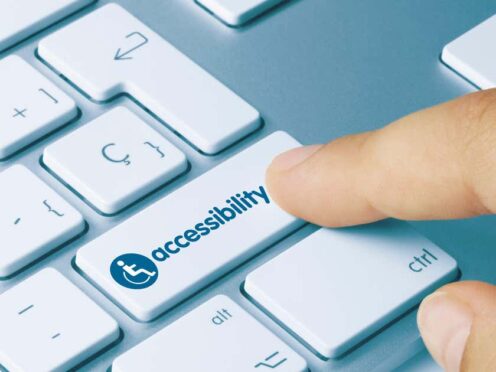Businesses must consider the needs of disabled consumers from the outset and not as an “afterthought” when designing their products and services, the Women and Equalities Committee (WEC) has said.
Those that fail to adopt inclusive design risk missing out on the spending power of disabled households estimated to be worth £274 billion a year, the cross-party committee of MPs warned.
The committee’s report, entitled Accessibility Of Products And Services To Disabled People, said many private sector websites continued to “fall short” of being accessible to disabled consumers.
The report, the second of three based on its findings during an inquiry into the National Disability Strategy (NDS), said the Government had “still not acted on its commitment to address the problem” despite it being recognised as an issue in the strategy published in July 2021.
Currently, only the public sector must follow specific regulations that require their websites and applications to conform to international web accessibility standards.
The WEC called on the Government to “resolve this as a priority” and make private sector websites and applications which provide essential products and services subject to the same regulations as the public sector.
Disabled people faced additional costs in their daily lives, the report noted, recommending the Government establish an Extra Costs Taskforce as a priority and by no later than summer 2024.
It warned that the introduction of flat bank cards and the phasing out of embossed cards was leaving some disabled people, particularly those who were blind or partially sighted, struggling to carry out financial tasks independently.
The WEC recommended the Financial Conduct Authority (FCA) should work with the retail banking sector and organisations such as the RNIB to ensure all banks “embraced inclusive design from the outset”.
Banks and providers of cash points must ensure all machines have been approved by disabled users, are installed in accessible locations and regularly checked, it added.
The WEC also raised concerns about the inaccessibility of some food packaging for disabled consumers, and said the Government should review its food labelling guidance and consider new technology such as NaviLens, an app which can be used to get information from optical codes placed on anything from buildings to food labels.
WEC chairwoman Caroline Nokes said: “Disabled people shouldn’t face unnecessary barriers when using online shopping and services.
“Despite the untapped potential of the purple pound, not all businesses are considering the needs of disabled consumers. Accessibility must be prioritised with inclusive design by default for products and services.
“Given that access to online services, information and social networks is increasingly part of everyday life for all, it is imperative that the Government acts on what it has described as the ‘persistently poor accessibility of private sector websites’ without further delay.
“While some banks and financial providers have innovated to make their services accessible to blind and partially sighted customers, such as issuing cards with tactile indicators, this needs to be standard practice across the sector as providers continue to phase out embossed cards and introduce flat bank cards.”
